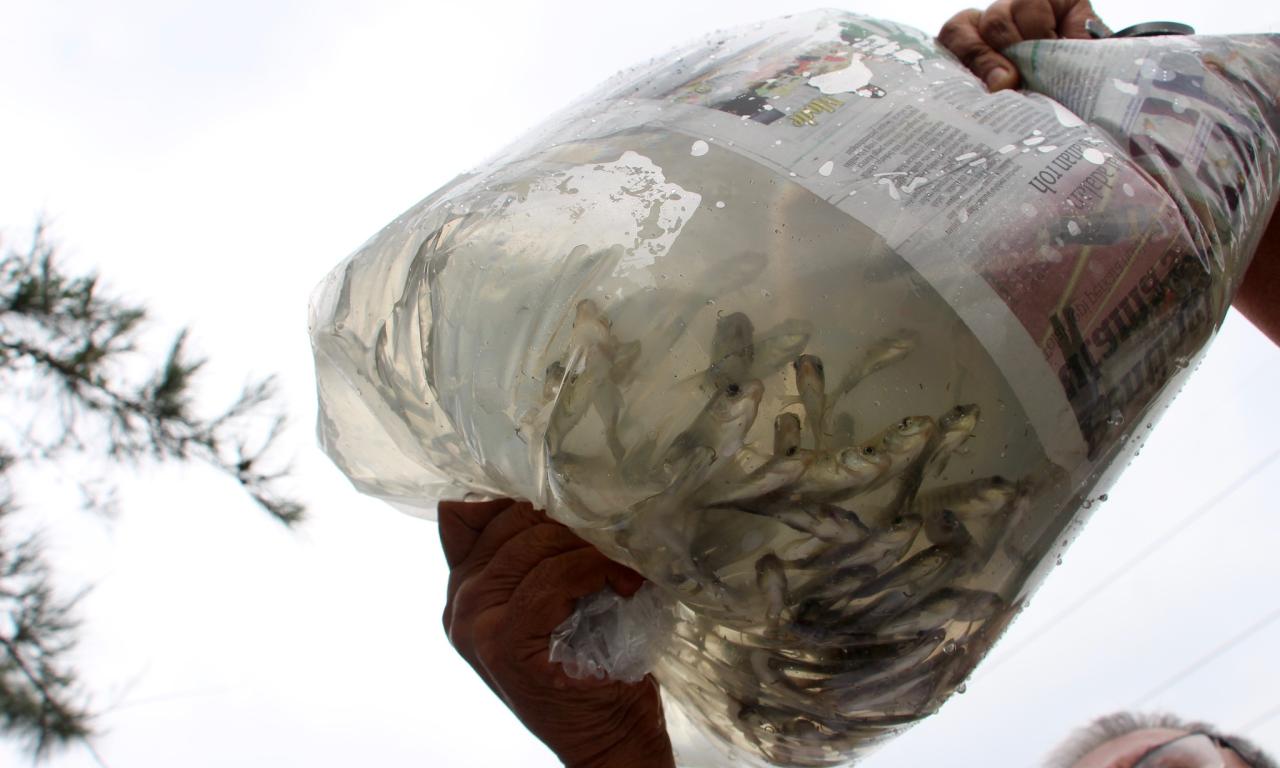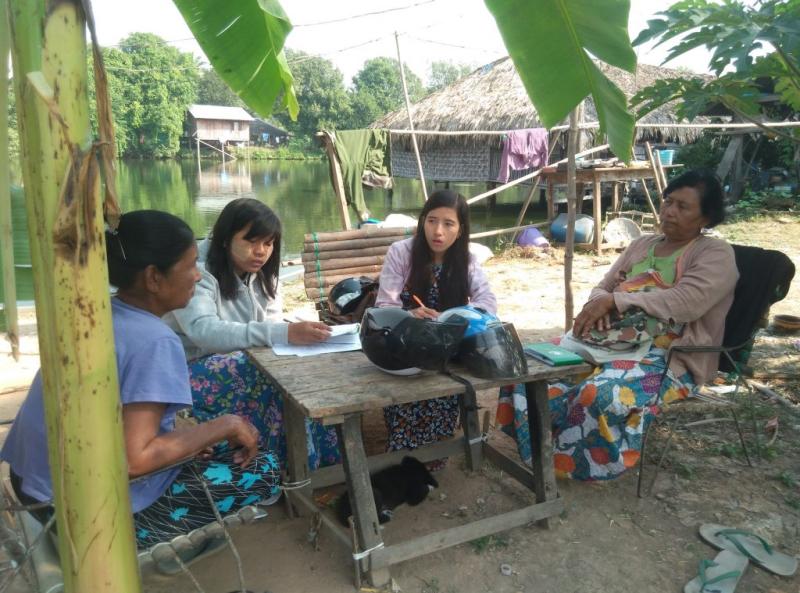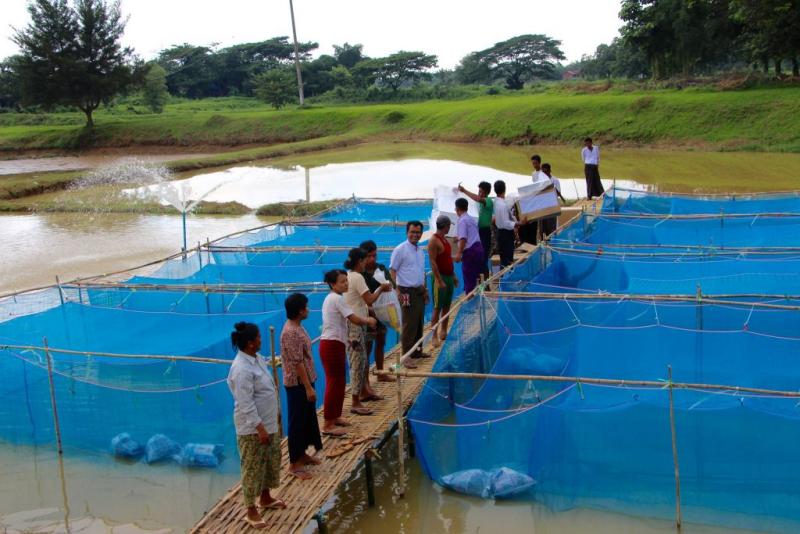
As aquaculture assumes greater significance as a means to meet global food and nutrition demands, concerns about its environmental impacts are on the rise. Modeling key fish supply and aquaculture systems for biophysical resource use is a vital step for estimating environmental footprints and was the focus of a WorldFish study in Myanmar.
Recommended publications
- Promoting the sustainable growth of aquaculture in Myanmar to improve food security and income for communities in the Ayeyarwady Delta and Central Dry Zone
- Analysis of feeds and fertilizers for sustainable aquaculture development in Bangladesh
- Measuring the potential for sustainable intensification of aquaculture in Bangladesh using life cycle assessment
Aquaculture is one of the fastest growing food production sectors in the world and an attractive option for improving livelihood security, especially in developing countries. Yet as aquaculture assumes greater significance as a means to meet global food and nutrition demands, concerns about the environmental impacts of aquaculture systems are on the rise.
The main areas that dictate the environmental impacts of aquaculture systems are the amount and type of external resources, such as the feeds, fertilizers and fuel used in the production cycle, and the distance the harvested fish travels from pond to plate (food miles).
Generating information on these resources is therefore important to provide insights into the environmental footprints arising from aquaculture systems.
Modeling Myanmar’s aquaculture systems
In Myanmar, aquaculture has grown rapidly over the last ten years. The country’s aquaculture systems range from low-input extensivesystems to high-input intensive systems, depending on the type and amount of resources such as feed used in production.
Modeling fish production and supply systems for biophysical resource use can guide in managing for fewer environmental impacts. This was the focus of a recent WorldFish study commissioned by the Fisheries Research Development Network (FRDN), a multisectoral research platform of which WorldFish is part, in collaboration with the Myanmar Department of Fisheries and Mandalay University.
The goal of the study was to characterize the biophysical resource use of key aquaculture production systems that supply the Mandalay market. Mandalay was chosen as a reference as it receives fish produced locally as well as fish supplied from the distant Yangon area.

The study modeled four key aquaculture systems from two geographical locations: the Mandalay region and the Yangon region. All four systems generally followed the same operational calendar in a growing cycle. Fish were stocked in polyculture (typically Indian carps, common carp and catfish), ponds were limed and fertilized with cow manure and fish were fed using a variety of feeds. Typically, feral tilapia and wild snakeheads were the marketable non-stocked fish species.
Two of the aquaculture systems were based in the Mandalay region. These systems were extensive, predominantly used rice bran as feed or raised chickens and recycled their feces as a fertilizer to encourage the growth of natural feed in the grow-out pond.
The other two systems were based in the Yangon region and were either semi-intensive or intensive and used brewers’ spent grain and commercial feed respectively. Typically, farms in the Yangon region had a longer growing cycle (over two years compared to nine months) and recorded higher yields (over five metric tons for each acre against one metric ton for each acre) compared to the systems in the Mandalay region.
Environmental impacts associated with feed production need further research
Discussion about feed use and its efficiency is important for developing sustainable aquaculture systems. Feed is one of the primary and most costly inputs in aquaculture, and previous studies have identified it as a significant contributor to greenhouse gas emissions. Feeds that produce higher fish yields with similar or lower environmental impacts are thus desirable.
The conventional and easiest way to compare feed efficiency in aquaculture systems is the feed conversion ratio (FCR). FCR is the ratio of input of feed to the weight gain as fish yield. The extensive systems had the highest range of FCR (2.8 to 6.9), followed by semi-intensive systems (2.4 to 3) and intensive systems (1.5 to 2.5). The results indicated that the extensive systems were least efficient in the conversion of feed (predominantly rice bran) to fish yield, whereas the semi-intensive and intensive systems used nutritionally better feed (brewers’ spent grain and commercial feed respectively), produced better yields and therefore had a lower FCR range.

Preliminary assessment suggested that although the intensive systems were efficient in the conversion of feed, they produced higher greenhouse gas emissions for each kilo of fish harvested and transported to Mandalay market compared to the extensive systems. The intensive systems used commercial feed (composed of key raw materials such as fishmeal, cereals, pulses, probiotics, minerals, vitamins, cassava flour), and their production contributed the most to greenhouse gas emissions followed by inputs such as fertilizers. This means that alongside FCR, information on associated environmental impacts from resource use such as feed is required for informed decision-making in aquaculture systems.
Further work is also required to confirm the results from this study and should include major environmental concerns alongside greenhouse gas emissions such as eutrophication, acidification, water consumption and land use. These will provide more accurate and comprehensive information for ongoing environmental improvement of aquaculture systems and the development of environmentally sustainable fish production and supply chains in Myanmar.